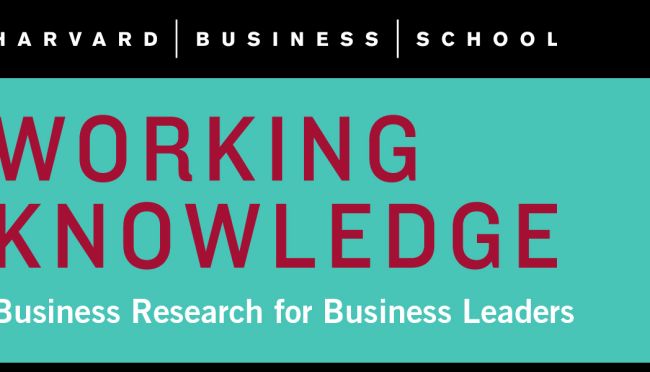Product Design →
→

- 31 Jan 2023
- Cold Call Podcast
Addressing Racial Discrimination on Airbnb
For years, Airbnb gave hosts extensive discretion to accept or reject a guest after seeing little more than a name and a picture, believing that eliminating anonymity was the best way for the company to build trust. However, the apartment rental platform failed to track or account for the possibility that this could facilitate discrimination. After research published by Professor Michael Luca and others provided evidence that Black hosts received less in rent than hosts of other races and showed signs of discrimination against guests with African American sounding names, the company had to decide what to do. In the case, “Racial Discrimination on Airbnb,” Luca discusses his research and explores the implication for Airbnb and other platform companies. Should they change the design of the platform to reduce discrimination? And what’s the best way to measure the success of any changes?

- 12 Oct 2022
- Research & Ideas
When Design Enables Discrimination: Learning from Anti-Asian Bias on Airbnb
Airbnb bookings dropped 12 percent more for hosts with Asian names than other hosts during the early months of the COVID-19 pandemic, says research by Michael Luca. Could better design deter bias, particularly during times of crisis?
- 02 Aug 2020
- What Do You Think?
Is the 'Experimentation Organization' Becoming the Competitive Gold Standard?
SUMMING UP: Digital experimentation is gaining momentum as an everyday habit in many organizations, especially those in high tech, say James Heskett's readers. Open for comment; 0 Comments.

- 28 Jul 2020
- Research & Ideas
Racism and Digital Design: How Online Platforms Can Thwart Discrimination
Poor design decisions contribute to racial discrimination on many online platforms. Michael Luca and colleagues offer tips for reducing the risk, used by Airbnb and other companies. Open for comment; 0 Comments.

- 10 Dec 2018
- Working Paper Summaries
Platform Competition: Betfair and the U.K. Market for Sports Betting
Since the early 2000s, online betting exchanges have had a new relationship with customers relative to traditional bookmakers, providing a platform to match individuals willing to lay and back the same outcome. This study shows how exchanges’ platform design choices have major implications for their likelihood of success.

- 06 Aug 2018
- Research & Ideas
Supersmart Manufacturing Tools are Lowering Prices on TVs, Bulbs, and Solar Panels
Electronics manufacturers are finding it increasingly difficult to stay ahead of low-cost competitors, says Willy Shih. Open for comment; 0 Comments.

- 20 Dec 2017
- Lessons from the Classroom
How to Design a Better Customer Experience
With the help of LEGO bricks, Stefan Thomke helps business executives discover how design principles can serve as building blocks to create a great customer experience. Open for comment; 0 Comments.
- 29 Mar 2017
- Research & Ideas
The Story of Why Humans Are So Careless With Their Phones
Consumers act more recklessly with the products they own when better versions become available, according to research by Silvia Bellezza, Joshua M. Ackerman and Francesca Gino. This comic by Josh Neufeld explains. Open for comment; 0 Comments.
- 20 Jul 2016
- Research & Ideas
Airplane Design Brings Out the Class Warfare in Us All
Air rage is often blamed on overcrowded flights and postage stamp-size seats, but researchers Michael Norton and Katherine A. DeCelles find another culprit: resentment toward passengers in first class. Open for comment; 0 Comments.
- 14 Jul 2014
- Research & Ideas
Pay Attention To Your ‘Extreme Consumers’
Jill Avery and Michael Norton explain what marketers can learn from consumers whose preferences lie outside of the mainstream. Open for comment; 0 Comments.
- 11 Apr 2011
- Lessons from the Classroom
Teaching a ‘Lean Startup’ Strategy
Most startups fail because they waste too much time and money building the wrong product before realizing what the right product should have been, says HBS entrepreneurial management professor Thomas R. Eisenmann. Closed for comment; 0 Comments.
- 05 Aug 2010
- What Do You Think?
What Is Customer Opinion Good For?
Summing Up: Are customer wishes irrelevant when creating a new product? Jim Heskett's readers say it depends on the product, on market goals, and where you are in the development cycle. (Online forum has closed; next forum opens September 2.) Closed for comment; 0 Comments.
- 19 Feb 2008
- Research & Ideas
Radical Design, Radical Results
Consumers appear increasingly willing to make purchase decisions based upon their emotions about a product—how it looks, or sounds, or makes them feel using it. But the traditional design process based on user experience goes only so far in creating radical innovation. Harvard Business School visiting scholar Roberto Verganti is exploring the new world of "design-driven innovation." Key concepts include: Innovative product design is risky, but provides competitive advantage to companies that understand how a product "speaks" to customers. Little theory exists to point the way for companies that want to create a successful design strategy beyond the traditional user-driven design process. Companies often adopt one of three design strategies: launch and see, see and launch, or wait and see. Innovators may often be in the see and launch category. Innovators understand and build off each other's ideas better than the imitators do. Closed for comment; 0 Comments.

The $15 Billion Question: Have Loot Boxes Turned Video Gaming into Gambling?
Critics say loot boxes—major revenue streams for video game companies—entice young players to overspend. Can regulators protect consumers without dampening the thrill of the game? Research by Tomomichi Amano and colleague.